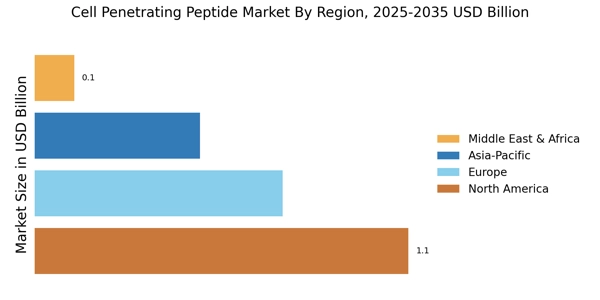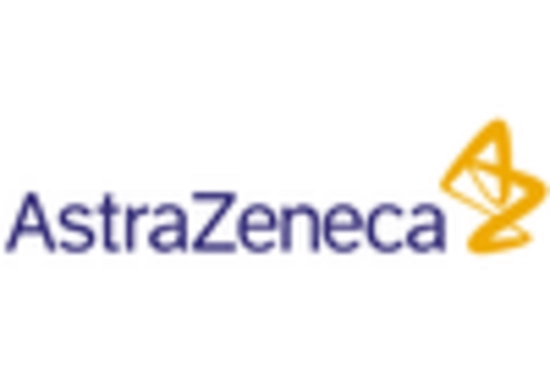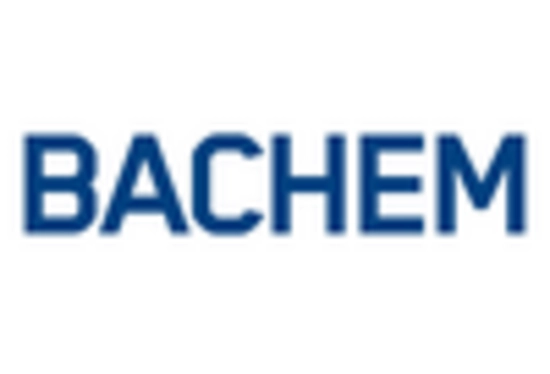The Cell Penetrating Peptide Market is currently characterized by a dynamic competitive landscape, driven by increasing demand for innovative therapeutic solutions and advancements in drug delivery systems. Key players such as Bachem AG (Switzerland), AstraZeneca PLC (United Kingdom), and PeptiDream Inc. (Japan) are strategically positioning themselves through a combination of research and development, partnerships, and regional expansions. Bachem AG (Switzerland) focuses on the production of high-quality peptides, leveraging its expertise to enhance its market presence. Meanwhile, AstraZeneca PLC (United Kingdom) emphasizes innovation in drug formulation, particularly in oncology, which aligns with the growing trend of personalized medicine. PeptiDream Inc. (Japan) is notable for its unique peptide discovery platform, which allows for the rapid development of cell-penetrating peptides tailored for specific therapeutic applications, thereby shaping the competitive environment through technological differentiation.
In terms of business tactics, companies are increasingly localizing manufacturing to reduce costs and enhance supply chain efficiency. The market structure appears moderately fragmented, with a mix of established players and emerging biotech firms. This fragmentation allows for diverse approaches to product development and market entry, as smaller companies often bring innovative solutions that challenge the status quo. The collective influence of these key players fosters a competitive atmosphere where collaboration and strategic partnerships are essential for growth.
In August 2025, Bachem AG (Switzerland) announced a strategic partnership with a leading biotechnology firm to co-develop a novel cell-penetrating peptide aimed at enhancing the delivery of RNA-based therapeutics. This collaboration is significant as it not only expands Bachem's product portfolio but also positions the company at the forefront of the rapidly evolving RNA therapeutics market, which is gaining traction due to its potential in treating various genetic disorders.
In September 2025, AstraZeneca PLC (United Kingdom) launched a new initiative focused on integrating artificial intelligence into its peptide design processes. This move is indicative of the company's commitment to leveraging cutting-edge technology to streamline drug development and improve the efficacy of its therapeutic offerings. By adopting AI, AstraZeneca aims to enhance its competitive edge in the market, potentially leading to faster and more efficient drug discovery cycles.
In July 2025, PeptiDream Inc. (Japan) secured a significant investment from a venture capital firm to expand its research capabilities in cell-penetrating peptides. This funding is expected to accelerate the development of innovative peptide-based therapies, reinforcing PeptiDream's position as a leader in the field. The investment underscores the growing interest in peptide therapeutics and the potential for high returns in this niche market.
As of October 2025, current competitive trends in the Cell Penetrating Peptide Market are increasingly defined by digitalization, sustainability, and the integration of artificial intelligence. Strategic alliances are becoming more prevalent, as companies recognize the value of collaboration in navigating complex regulatory environments and accelerating product development. Looking ahead, competitive differentiation is likely to evolve from traditional price-based competition to a focus on innovation, technological advancements, and supply chain reliability. This shift suggests that companies that prioritize research and development, alongside strategic partnerships, will be better positioned to thrive in the evolving landscape.


















Leave a Comment